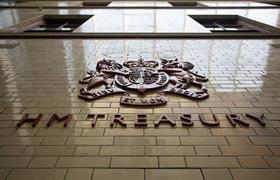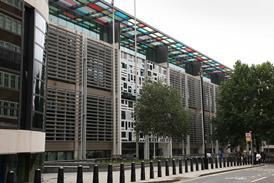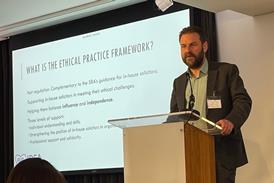Solicitors remain at ‘high risk’ of being exploited by money launderers, according to the government’s first comprehensive review since 2020 of how the crime is mutating.
The finding will lend fresh impetus to the Solicitors Regulation Authority’s intensifying crackdown on law firms that breach anti-money laundering regulations. But it may also complicate recently announced Treasury plans to bring forward ‘clearer and more proportionate’ AML rules by the end of the year.
The UK’s National Risk Assessment of Money Laundering and Terrorist Financing, jointly developed by HM Treasury and the Home Office, is the first such report for five years. It acknowledges that AML non-compliance is relatively low in the legal profession, but adds that the ‘high-risk’ rating of previous reports in 2020 and 2017 cannot be downgraded, due to the nature of the work.
Legal service providers remain low-risk for terrorist financing.
’The volume of cases of suspected money laundering that involve lawyers has remained high, relative to the small number of regulated professionals,’ the report says. ’Criminals are often drawn to legal service providers due to the veneer of legitimacy legal professionals can offer due to perceptions of the sector’s integrity. The nature of the services offered, and the volumes of money that can be moved through them also contribute to the sector vulnerabilities.’
As in 2020, conveyancing, trust and company services are judged to be at the greatest risk of the misuse and exploitation of client accounts. Sham litigations were identified in 2020 as an emerging risk, but with just one related prosecution since this is no longer viewed as a widespread problem.

The volume of suspicious activity reports by the legal sector has fallen since 2020, but this was not deemed to be indicative of a fall in the scale of misuse of legal professionals.
‘Only 16%’ of firms were non-compliant with money laundering regulations in 2023-24, but those failing in their duties are ‘complacent, take a “tick box” approach to compliance, or lack sector specific knowledge and/or training on the money laundering threat’.
The report included case studies of where lawyers have facilitated money laundering activities. One involved a solicitor whose client had recently paid £4m toward the purchase of a property in London’s Mayfair. This solicitor supplied a fake ‘letter of engagement’ that set out his role representing a British Virgin Island company which was bought by the client and used to move funds for the purchase of the Mayfair property. This solicitor was sentenced to nine months in prison, suspended for 18 months, and later suspended by the SDT for a year.
The SRA has fined dozens of firms of all sizes in the past two years for AML failings. It has come in for criticism for imposing swingeing penalties where no harm was done, but will seize on a Solicitors Disciplinary Tribunal ruling this week as a vindication of its strategy.
Fining an east London firm £58,000 for breaching the rules, the tribunal said it was a ‘matter of luck’ that money laundering had not occurred.
Responding to the report, Alexandra Jones, director of AML at the SRA, said: 'This assessment shows that legal services continue to be vulnerable to misuse and there is growing concern about the role of professional enablers in facilitating illegal activity.
'In response, we will update our own sectoral risk assessment, which will help us to support law firms in tailoring their AML controls in line with risks identified.'
The Law Society responded to the report by asking what evidence exists to conclude that the legal sector is ’high risk’. It called on the government to adopt a more balanced and evidence-led risk-based approach.
Society president Richard Atkinson said: ‘Legal professionals continue to play a vital role in upholding the integrity of the wider financial systems and the country’s economy and growth. It is therefore disappointing to see that the legal sector continues to be categorised as high risk, when there have been very few, if any, prosecutions or convictions related to money laundering within the legal sector.
‘The absence of direct evidence raises questions about the proportionality of this risk classification and fails to recognise the significant strides made in recent years to improve compliance, awareness and reporting mechanisms.’
This article is now closed for comment.



























26 Readers' comments